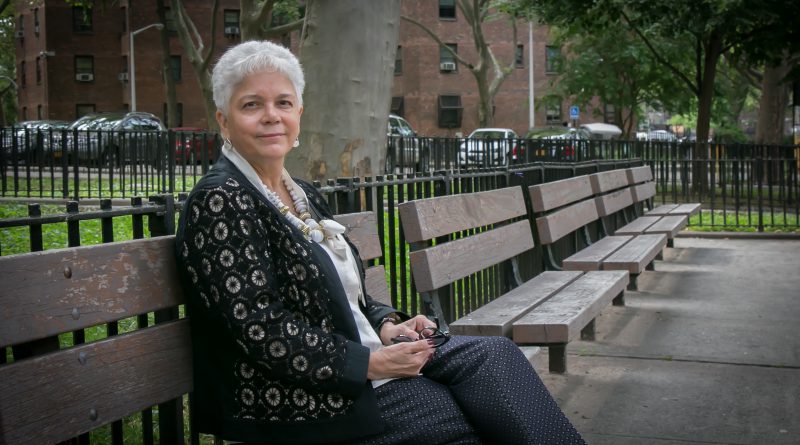From La Guardia Houses to City Hall
Ninfa Segarra moved into La Guardia Houses as a child in 1955 – before all of the development’s buildings had even been completed – and lived there until she got married. As the Deputy Mayor for Education and Human Services, she oversaw several agencies, including NYCHA, in the 1990s. The NYCHA Journal spoke with Ms. Segarra about her upbringing and her life’s work.
A Chat with Former Deputy Mayor Ninfa Segarra
Ninfa Segarra moved into La Guardia Houses as a child in 1955 – before all of the development’s buildings had even been completed – and lived there until she got married. After graduating from NYU and New York Law School, she began a decades-long career in City government and the non-profit sector. As the Deputy Mayor for Education and Human Services, she oversaw several agencies, including NYCHA, in the 1990s. She served on the Board of Education for 12 years and was its president for two years. She was also executive director of the New York City Police Museum, vice president for intercampus collaboration at CUNY, and is involved in various Latino organizations. The NYCHA Journal spoke with Ms. Segarra about her upbringing and her life’s work.
What was growing up at La Guardia Houses in the 1950s and 60s like?
My days at La Guardia are treasures. Our neighbors formed a village that protected and nurtured all the children in the building. My mother worked in a factory, so neighbors cared for my sister and me. I have fond memories of playing in the courtyard and taking ballet classes at the community center. I was in awe of our view from the apartment of the active harbor – I saw ships passing by with sailors on the deck saluting.
What are you most proud of in your career?
My proudest moment was sharing with my children, parents, and sister my appointment as Deputy Mayor. I asked for and got jurisdiction over NYCHA. My father and mother saw the fruits of their belief in my future. To be able to contribute to the well-being of residents was an honor. I visited every development in the city to see firsthand the challenges faced by our residents.
My tenure on the NYC Board of Education was also very personal. During that time, my two children attended public schools. So every decision I made impacted their lives and future.
I had the privilege of opening the NYC Police Museum on January 2002 – just months after 9/11. We worked with families of the fallen to create an exhibit to honor them, visited by people from all over the world.
Why did you go into public service?
It was my one and only choice! My Catholic school education stressed personal responsibility to care for others. In high school, I joined ASPIRA, a Puerto Rican youth organization that honed my leadership and advocacy skills.
What’s your advice for young people looking to make a difference?
My life is testament that with tenacity you can positively affect your community. You cannot do this alone. Keep an eye out for mentors who can help you get to the next level. Also, there are many ways to make a difference.
My parents only attended grade school in Puerto Rico. Yet they ensured that their two daughters had access to educational opportunities. Education is a must for personal achievement and the ability to impact the world.
Why is public housing important?
Public housing gave our family the ability to live and thrive in the greatest city in the world. The guarantee of an affordable home was an important factor in our well-being. It has served, and continues to serve, that purpose for many. We must fight to protect public housing.

